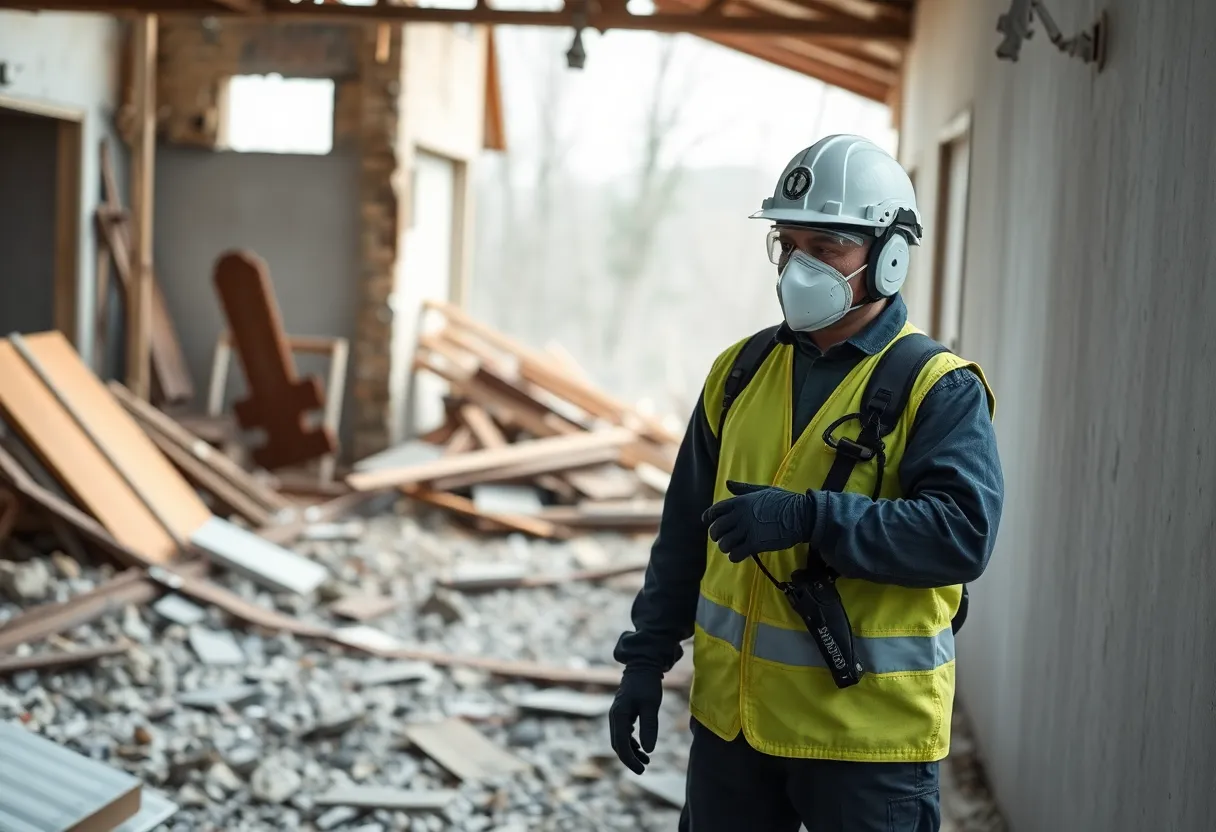News Summary
Danger Looms: As Natural Disasters Rise, So Do Asbestos Exposure Risks
As the frequency of natural disasters escalates across the globe, alarming concerns regarding asbestos exposure are coming to the forefront. Recent studies and personal testimonies underscore that most individuals have either faced a natural disaster themselves or know someone directly affected by these catastrophic events.
Natural disasters such as wildfires, floods, and avalanches often wreak havoc on buildings, leading to structural damage that carries a hidden risk: the potential for asbestos exposure. While asbestos use was banned in new construction, the dangerous mineral remains trapped within the materials of older buildings, many of which can date back decades.
The Legacy of Asbestos
Asbestos, a naturally occurring mineral, gained popularity due to its remarkable properties, including fire resistance, high tensile strength, and excellent sound insulation. Its use became widespread in the construction industry from the late 1800s onwards, and particularly surged after World War II. Among the many materials that contain asbestos are floor coverings, cement siding, and roofing shingles, flooding the market with products potentially harmful to human health.
Despite its dangers, asbestos remained a common fixture in American manufacturing until 1989, and only recently—ban on the import of asbestos-containing materials occurred in 2024. This long-lasting presence in building products makes it nearly impossible to find construction materials that are entirely free of asbestos.
The Health Risks
The real threat of asbestos comes from its fibers, which are light and can easily become airborne when disturbed, leading to inhalation risks for anyone nearby. The health consequences of asbestos exposure are severe and well-documented. It has been linked to various life-threatening illnesses, including different types of lung cancers, notably mesothelioma, and asbestosis—a serious lung condition.
According to the World Health Organization (WHO) and the International Labour Organization (ILO), more than 200,000 deaths worldwide each year are attributable to asbestos exposure in occupational settings. Alarmingly, this accounts for over 70% of work-related cancer fatalities. But the dangers extend beyond the workplace; non-workplace-related illnesses and fatalities resulting from asbestos exposure continue to pose a serious public health threat.
First Responders at Risk
Those on the front lines during and after natural disasters—like first responders and disaster recovery workers—face heightened risks of asbestos exposure when clearing debris from damaged structures. It is crucial that the identification and remediation of asbestos are prioritized in these situations to minimize health hazards.
For property owners in Colorado, it is a legal requirement that licensed professionals conduct thorough inspections for asbestos in potentially affected buildings. This process involves taking bulk samples of materials and submitting them to an EPA-approved laboratory for analysis, applicable to all building types, regardless of age. The inspection not only identifies asbestos but can also uncover other hazardous materials such as lead-based paint.
Navigating the Aftermath
Understanding the findings from inspection reports can be complicated for many property owners. However, consultation with experts can ease this process, ensuring that health and safety are the top priorities following a disaster. If asbestos is discovered, regulatory protocols must be strictly followed for safe removal. Notably, it is often more economical to remove all identified asbestos at once rather than delaying and risking exposure later.
After a disaster, there is no level of exposure to asbestos that is considered safe; thus, immediate action is essential. Many companies offer emergency response services, ensuring comprehensive remediation measures including lead abatement, mold remediation, and thorough inspection and removal of asbestos.
As our world continues to see an uptick in natural disasters, the risks associated with asbestos exposure will remain a pertinent concern. Awareness and professional assistance are critical in safeguarding the health of residents, responders, and recovery crews alike.
Deeper Dive: News & Info About This Topic
HERE Resources
Edison Public Library to Undergo Asbestos Removal, Closure Scheduled
Proposed FDA Rule to Tighten Regulations on Talc-Containing Cosmetics Due to Asbestos Concerns
Asbestos Risks Soar Amid Ongoing Conflict in Israel
FDA Takes Big Steps to Tackle Asbestos in Talc
FDA Proposes Bold Move to Combat Asbestos in Talc-Containing Cosmetics
FDA Takes Bold Steps to Tackle Asbestos in Talc-containing Cosmetics
FDA Proposes Life-Saving Rules to Tackle Asbestos in Cosmetics
New FDA Proposal Targets Asbestos in Talc-Containing Cosmetics
Asbestos Scandal Erupts at Long Beach’s Colorado Lagoon Construction Site
U.S. FDA Proposes Asbestos Testing for Talc in Cosmetics
Additional Resources
- GlobeNewswire: Colorado Hazard Control Insights on Asbestos Exposure Risk
- Wikipedia: Asbestos
- Love Property: Toxic Towns
- Google Search: Asbestos Health Risks
- Newsfile: Colorado Hazard Control Insights on Asbestos Abatement
- Google Scholar: Asbestos Exposure and Natural Disasters
- Long Beach Post: Asbestos Concerns in Colorado
- Encyclopedia Britannica: Asbestosis



















